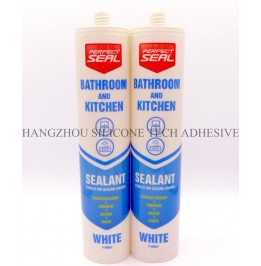Sealants play a crucial role in maintaining the integrity of structures by preventing water, air, and debris infiltration. However, their performance can be severely compromised by external forces such as earthquakes or heavy vibrations. Understanding how these events affect sealants is essential for ensuring long-term durability, especially in regions prone to seismic activity.

Earthquakes generate sudden, intense movements that create stress on sealant joints. These forces can cause the substrate materials to shift, stretch, or compress, leading to adhesion failure or structural damage. The severity of the impact depends on factors like the magnitude of the earthquake, the type of substrate, and the quality of the sealant installation.
Sealants rely on strong bonds with surfaces to function effectively. During an earthquake, the rapid shaking can weaken these bonds, especially if the substrate is not properly prepared or if the sealant lacks flexibility. For example, concrete joints sealed with rigid materials may crack or detach when subjected to lateral forces, allowing water or contaminants to penetrate.
Earthquakes often cause uneven settlement or displacement of building components. This movement can stretch or compress sealant joints beyond their elastic limits, leading to permanent deformation. In cases where the sealant cannot return to its original shape, gaps may form, compromising its ability to seal effectively.
Repeated vibrations, even those from minor tremors or nearby construction, can gradually degrade sealant performance. Over time, micro-cracks may develop, reducing the material’s waterproofing capabilities and making it more susceptible to environmental damage.
Certain parts of a building are more prone to sealant failure during earthquakes due to their structural design or exposure to movement.
Expansion joints are intentionally designed to accommodate movement in buildings, bridges, or parking garages. However, during an earthquake, these joints may experience excessive displacement, causing the sealant to tear or pull away from the edges. If not repaired promptly, this can lead to water damage or structural instability.
Joints where different materials meet—such as concrete and steel, or glass and aluminum—are particularly vulnerable. These areas often have varying thermal expansion rates, and earthquakes can exacerbate the stress on the sealant, leading to premature failure.
Sealants used in floors, walkways, or machinery-mounted surfaces may face additional stress from vibrations caused by foot traffic or equipment operation. In seismic events, these vibrations combine with ground shaking, increasing the likelihood of sealant degradation.
While it’s impossible to completely prevent sealant damage during a major earthquake, certain measures can significantly improve their resistance to vibrations and movement.
Opt for sealants with high elasticity and elongation properties, as these can better accommodate joint movement without cracking. Look for products specifically designed for dynamic applications, such as those used in bridges or industrial facilities.
A sealant’s ability to stretch and return to its original shape is critical in seismic zones. Materials with low elasticity may harden over time, becoming brittle and prone to cracking under stress.
Sealants exposed to repeated vibrations should have excellent fatigue resistance. This ensures they maintain their sealing properties even after hundreds or thousands of small movements.
Even the best sealant will fail if not installed properly. Follow these guidelines to maximize performance:
Thoroughly clean and dry the substrate before applying sealant. Remove any dust, oil, or loose particles that could interfere with adhesion. Roughening smooth surfaces with sandpaper or a wire brush can improve bond strength.
For joints deeper than ½ inch, insert a backer rod before sealing. This helps control the depth of the sealant, prevents sagging, and allows for proper movement without overstressing the material.
Use a caulking gun to apply a consistent bead of sealant. Shape it into a concave profile using a wet finger or a tooling device. This ensures even stress distribution and enhances the sealant’s ability to flex.
After an earthquake or significant vibration event, inspect all sealant joints for signs of damage. Look for cracks, gaps, or detachment from the substrate. Promptly repair any issues to prevent further deterioration and maintain the structure’s integrity.
Pay special attention to expansion joints, material transitions, and mechanically stressed zones. These areas are more likely to experience failure and should be checked more frequently.
Small cracks or gaps can quickly escalate into major problems if left unattended. Clean the affected area, remove any loose sealant, and reapply a fresh bead following the same installation techniques.
By understanding the risks posed by earthquakes and vibrations, and implementing proactive measures, builders and property owners can ensure their sealants remain effective even in seismically active regions.
Copyright 2019 by Hangzhou Silicone Tech Adhesive Co., Ltd. All rights reserved.
Bathroom Sealant | Acrylic Sealant | Dow Corning 795 | Aquarium Sealant | Dow Corning 732 | Clear Silicone Sealant | Polysulfide Sealant | Glazing Sealant | Mirror Sealant | IG Sealant
Powered by Onepound